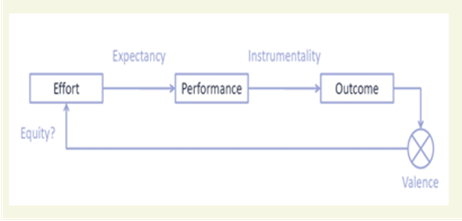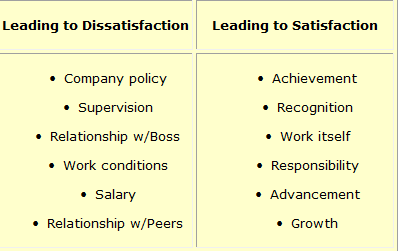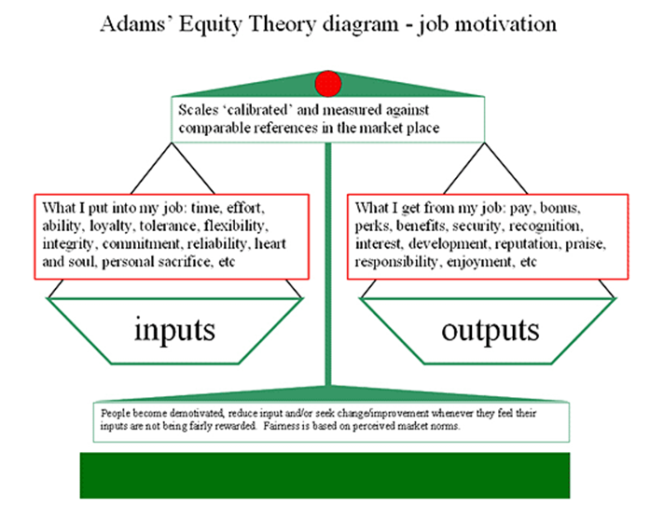 All papers examples
All papers examples
Disciplines

- MLA
- APA
- Master's
- Undergraduate
- High School
- PhD
- Harvard
- Biology
- Art
- Drama
- Movies
- Theatre
- Painting
- Music
- Architecture
- Dance
- Design
- History
- American History
- Asian History
- Literature
- Antique Literature
- American Literature
- Asian Literature
- Classic English Literature
- World Literature
- Creative Writing
- English
- Linguistics
- Law
- Criminal Justice
- Legal Issues
- Ethics
- Philosophy
- Religion
- Theology
- Anthropology
- Archaeology
- Economics
- Tourism
- Political Science
- World Affairs
- Psychology
- Sociology
- African-American Studies
- East European Studies
- Latin-American Studies
- Native-American Studies
- West European Studies
- Family and Consumer Science
- Social Issues
- Women and Gender Studies
- Social Work
- Natural Sciences
- Anatomy
- Zoology
- Ecology
- Chemistry
- Pharmacology
- Earth science
- Geography
- Geology
- Astronomy
- Physics
- Agriculture
- Agricultural Studies
- Computer Science
- Internet
- IT Management
- Web Design
- Mathematics
- Business
- Accounting
- Finance
- Investments
- Logistics
- Trade
- Management
- Marketing
- Engineering and Technology
- Engineering
- Technology
- Aeronautics
- Aviation
- Medicine and Health
- Alternative Medicine
- Healthcare
- Nursing
- Nutrition
- Communications and Media
- Advertising
- Communication Strategies
- Journalism
- Public Relations
- Education
- Educational Theories
- Pedagogy
- Teacher's Career
- Statistics
- Chicago/Turabian
- Nature
- Company Analysis
- Sport
- Paintings
- E-commerce
- Holocaust
- Education Theories
- Fashion
- Shakespeare
- Canadian Studies
- Science
- Food Safety
- Relation of Global Warming and Extreme Weather Condition
Paper Types

- Movie Review
- Essay
- Admission Essay
- Annotated Bibliography
- Application Essay
- Article Critique
- Article Review
- Article Writing
- Assessment
- Book Review
- Business Plan
- Business Proposal
- Capstone Project
- Case Study
- Coursework
- Cover Letter
- Creative Essay
- Dissertation
- Dissertation - Abstract
- Dissertation - Conclusion
- Dissertation - Discussion
- Dissertation - Hypothesis
- Dissertation - Introduction
- Dissertation - Literature
- Dissertation - Methodology
- Dissertation - Results
- GCSE Coursework
- Grant Proposal
- Admission Essay
- Annotated Bibliography
- Application Essay
- Article
- Article Critique
- Article Review
- Article Writing
- Assessment
- Book Review
- Business Plan
- Business Proposal
- Capstone Project
- Case Study
- Coursework
- Cover Letter
- Creative Essay
- Dissertation
- Dissertation - Abstract
- Dissertation - Conclusion
- Dissertation - Discussion
- Dissertation - Hypothesis
- Dissertation - Introduction
- Dissertation - Literature
- Dissertation - Methodology
- Dissertation - Results
- Essay
- GCSE Coursework
- Grant Proposal
- Interview
- Lab Report
- Literature Review
- Marketing Plan
- Math Problem
- Movie Analysis
- Movie Review
- Multiple Choice Quiz
- Online Quiz
- Outline
- Personal Statement
- Poem
- Power Point Presentation
- Power Point Presentation With Speaker Notes
- Questionnaire
- Quiz
- Reaction Paper
- Research Paper
- Research Proposal
- Resume
- Speech
- Statistics problem
- SWOT analysis
- Term Paper
- Thesis Paper
- Accounting
- Advertising
- Aeronautics
- African-American Studies
- Agricultural Studies
- Agriculture
- Alternative Medicine
- American History
- American Literature
- Anatomy
- Anthropology
- Antique Literature
- APA
- Archaeology
- Architecture
- Art
- Asian History
- Asian Literature
- Astronomy
- Aviation
- Biology
- Business
- Canadian Studies
- Chemistry
- Chicago/Turabian
- Classic English Literature
- Communication Strategies
- Communications and Media
- Company Analysis
- Computer Science
- Creative Writing
- Criminal Justice
- Dance
- Design
- Drama
- E-commerce
- Earth science
- East European Studies
- Ecology
- Economics
- Education
- Education Theories
- Educational Theories
- Engineering
- Engineering and Technology
- English
- Ethics
- Family and Consumer Science
- Fashion
- Finance
- Food Safety
- Geography
- Geology
- Harvard
- Healthcare
- High School
- History
- Holocaust
- Internet
- Investments
- IT Management
- Journalism
- Latin-American Studies
- Law
- Legal Issues
- Linguistics
- Literature
- Logistics
- Management
- Marketing
- Master's
- Mathematics
- Medicine and Health
- MLA
- Movies
- Music
- Native-American Studies
- Natural Sciences
- Nature
- Nursing
- Nutrition
- Painting
- Paintings
- Pedagogy
- Pharmacology
- PhD
- Philosophy
- Physics
- Political Science
- Psychology
- Public Relations
- Relation of Global Warming and Extreme Weather Condition
- Religion
- Science
- Shakespeare
- Social Issues
- Social Work
- Sociology
- Sport
- Statistics
- Teacher's Career
- Technology
- Theatre
- Theology
- Tourism
- Trade
- Undergraduate
- Web Design
- West European Studies
- Women and Gender Studies
- World Affairs
- World Literature
- Zoology
Change and Culture, Research Paper Example
Hire a Writer for Custom Research Paper
Use 10% Off Discount: "custom10" in 1 Click 👇
You are free to use it as an inspiration or a source for your own work.

Introduction
This paper provides an introduction to the relationships that exist between orientation, training and staff development within the healthcare sector. The examples illustrate a number of the leading motivational health theories.
Victor Vroom | Expectancy Theory
Vroom – The Expectancy Theory of Motivation was developed by Victor Vroom and is based upon outcomes. The model as illustrated in Fig 1 shows that for a person to become motivated in their work , a number of important elements need to be linked. These elements are Effort, Performance and Motivation. These variables are termed ‘valance’ and vroom put forward the stance that each of these must be linked for the person to become truly motivated . He proposes three variables to account for this, which he calls Valence, Expectancy and Instrumentality. (Borkowski, N. 2009)

Vroom defined Expectancy as the concept that increased effort will result in increased performance at work. Hence the more effort I put into the task the greater my productivity will be. This typically impacted by such items as : Available resources, the right skills for the job, the relevant managerial support for the job. Hence orientation in the job is linked to effort and training to that of improved performance which leads to motivation.
Within the concept of Vroom’s Model it is also important to consider aspects of communications and inclusivity. Communications is about transparency and openness and above all equity in the reward systems. Inclusivity is about “buy in” and treating the employees as an integral part of the solution. Before implementing changes discuss these with the workforce and if appropriate union representatives. Try to reach a level of understanding and common ground in the mechanics of the model. For example : the ways in which productivity and quality will be improved. The effort that will be required and the means by which this will be rewarded on an equitable basis. By doing this there is a better chance of getting the valance right and thereby increasing chances of success. It is also useful to overlay this theory with other theories, for example that of Maslow’s Hierarchy of Needs. It provides an added dimension and you should be able to see some important correlations.
Herzberg – Fredrick Herzberg developed the two factors Motivation Hygiene Theory in order to examine an employee’s work environment and determine those factors that produce satisfaction or dissatisfaction. He published these findings in a book entitled ‘Motivation to Work’ (1959). The studies were based upon a number of conducted interviews. Herzberg called these satisfactions ‘motivators’ and the dissatisfaction ‘hygiene factors’. The implications for management, as resulting from Herzberg’s theory were:
- An employee should be challenged at work and have a sufficiently interesting job to remain motivated in it;
- Those employees that demonstrated the capacity or capability should be suitable rewarded and allowed to develop;
- Where that job cannot be designed to offer work satisfaction the consideration should be made towards automating it. Wherever an individual cannot be fully utilised there will be a motivation problem (Milner, J.B. 2005)

Osgood and Tannenbaum’s Congruity Theory
This theory is linked to communication and persuasion. The theory examines situations where a source determines assertions about a concept with an audience having attitudes about both the source and concept. Such attitudes being positive (associative) or negative (dissociative). The theory point out that incongruity has negative imbalance effects being unpleasant and as such motivates audience to a shift in attitude. (Benoit, W.L. 2011)
Another aspect of congruity theory is that it provides a basis for predicting the direction of attitude change. This based upon the attitude of the audience to the source and concept. The Congruity theory states that where there are one or more people contradicting , there exists information where a judgment must be made by a single observer. The observer subsequently will exert pressure to change his or her judgment on one of the sides. When the situation exists where there is congruity , then there will be no problem, and the observer will not experience pressure of any form. (Tannenbaum, P. 1955)
Positive attributes:
- The theory is essentially a scientific one as it provides a model basis for predicting how third party observers react to arguments by two other people
Negative attributes:
- It offers little by way of explanation in terms of why people behave in this situation, with particular reference to how both views and attitudes change
Achievement Motivation Theory
As developed by David McClelland who obtained his Doctorate in Psychology from Yale and went on to teach at Wesleyan, Harvard and Boston Universities. McClelland suggested that people exhibit a strong bias aimed at a particular motivation need. This mix impacted with behaviour and working or management style. As such a strong motivation may undermine manager’s objectivity and decision making capacity e.g. the need to be liked. As such these Managers that exhibit strong leadership motivation tend to make the best leaders. The equally tend to have high expectations of their staff, being results motivated and high end achievers. McClelland compared high end achievers to that of gamblers as both are high risk takers. Such people tend to be catalysts for change and make things happen around them. They optimize resources and get the best out of people in order to achieve their goals. Such people tend to be very self-centered and may put their own personal goals and ambitions above that of the organisation. As such there is a need to ensure both personal and organisational goals correlate with one another. (Ellis, A. 2009)
Equity Theory
It was John Stacy Adams, a behavioural psychologist who put forward his Equity Theory on Job Motivation in 1963. Adams was influenced by Maslow and Herzberg; he put forward the view that an individual’s assessment and his perception of the relationship at work would influence the person’s motivation. When people tend to feel disadvantaged by being unfairly treated at work it will introduce a sense of dissatisfaction and demotivation. As such this concept of being ‘fair’ is central to this theory. The model is a fairly complex one of scales, balancing both input and output on an individual’s contribution at work. (Mukherjee.K., 2009)

Social Psychology and Personality Theory
Kurt Lewin has often been referred to as the Father of modern day Psychology. Lewin was influenced by Gestalt and emphasised the importance of personal characteristics and environmental traits impacting behavioural considerations. Lewin was similar to that of Maslow (famed for his Hierarch of Needs), in that behaviour was influenced by a number of individual needs, motives, goals, moods and ideals.
Mcgregor Xy Theory
Douglas McGregor was an American psychologist and put forward his XY theory in 1960 in a published works entitled ‘The Human side of enterprise’. A noted theorist in the area of motivation, McGregor stated that there were two basic components in the management of people. The Theory X defined the ‘Authoritarian Manager’, with a style similar to that adopted by the Military. He also stated that far too many business Managers leaned towards Theory X. The theory associated punishment with non-performance or under achievement. On the other hand Theory Y referred to the ‘Participative Style’ of Management, being much more team based, group dynamics and interactive. He said that people will be more motivated by rewards associated with achievement. Most people seek out and accept responsibility and will respond favourably to a challenge. He did not endorse the premise that people were inherently lazy and needed to be instructed.
Attribution Theory
It was Weiner who put forward Attribution Theory in 1980 and this became mainly associated with concepts of academic motivation. It stated that in terms of success or failure people tended to explain this in one of three distinct ways:
- Success or failure may be internal or external i.e. we have origin within us owing to factors that originate in our environment;
- It may be stable or unstable. Where it is stable the outcome most likely will be the same, whereas if it is unstable it most likely will prove to be different;
- It may be either controllable or uncontrollable. The former being where we can exert influence and the outcome but in the latter we cannot.
Conclusion
Most of the motivational theories put forward have stood the test of time and still have a great degree of relevance in the business world to-day. There are a wide degree of business case studies that review the working concepts of motivational theorists like Herzberg, Maslow, Lewin, Adams and McGregor. The concept of globalisation will introduce another element into the motivational school of thought i.e. that of multi-culturalism, empathy and social awareness. It will not be enough merely to be motivated within the confines of one’s own environment, instead a more holistic picture will be required that incorporates international business relationships, goals and objectives.
The concept of job or skill outsourcing and increased aspects of automation will continue to challenge motivational aspects in the working place. The man vs. machine interface will continue to develop in the field of cybernetics and artificial intelligence; hence psychologists will be faced with an entirely new challenge of how a human intelligence can remain motivated whilst possibly working with a more sophisticated and advanced artificial intelligence i.e. robotic machine. Neural Psychology is a relatively new science and there is still no rational explanation on the workings of the human mind.
References
Benoit, W. (2011, 11 24). Congruity Theory. Retrieved from Cios.org: http://www.cios.org/encyclopedia/persuasion/Ccongruity_theory_1congruity.htm
Borkowski, N. (2009). Organizational Behavior, Theory, and Design in Health Care. In N. Borkowski, Organizational Behavior, Theory, and Design in Health Care (pp. 127-131). London: Jones and Bartlett.
Ellis, A. A. (2009). Personality theories: critical perspectives . London: Sage.
Milner, J. (2005). Organisational Behaviour: Essential theories of motivation & leadership. New York: M.E. Sharp.
Mukherjee.K. (2009). Principles of Management. New Delhi: McGraw Hill.
Tannenbaum, C. O. (1955). The principles of congruity in the prediction of attitude change. Psychology Review Vol 62, 42-55.

Stuck with your Research Paper?
Get in touch with one of our experts for instant help!
Tags:

Time is precious
don’t waste it!
writing help!


Plagiarism-free
guarantee

Privacy
guarantee

Secure
checkout

Money back
guarantee

